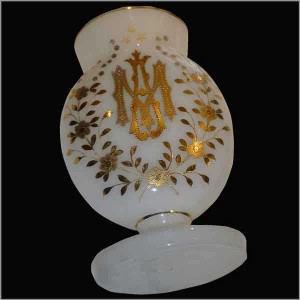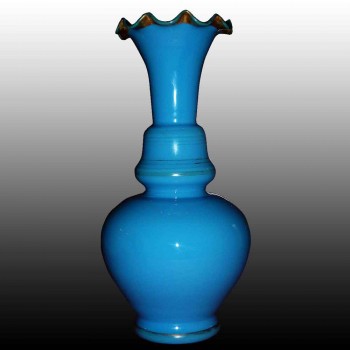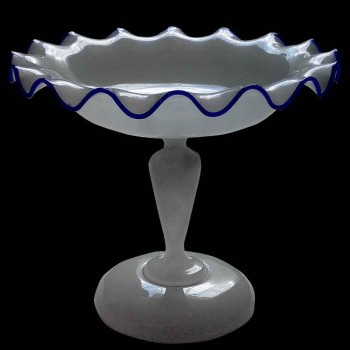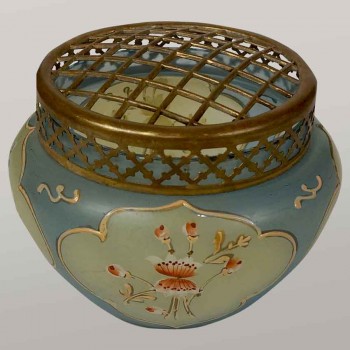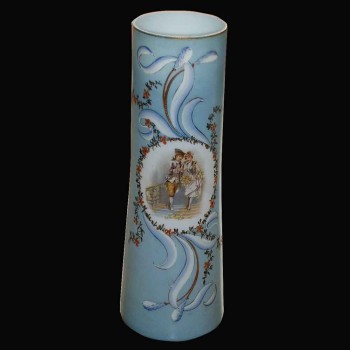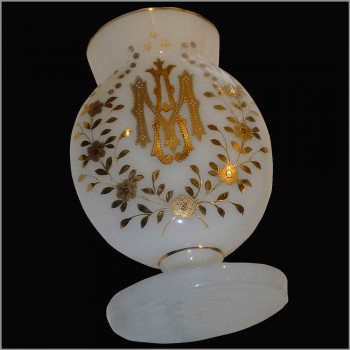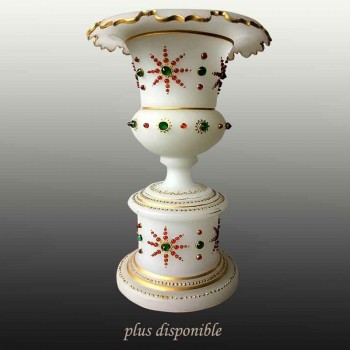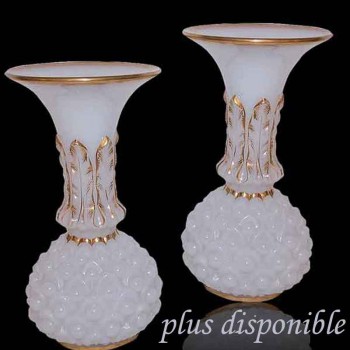crystal opaline
Crystal opaline is refined glassware characterized by its milky, translucent appearance, obtained by adding metallic oxides during the manufacturing process. First produced in France in the 19th century, it is prized for its soft hues ranging from white to blue, pink or green, as well as for its elegant shapes and delicate decorations. Used to create vases, bowls, bonbonnières and decorative objects, crystal opaline embodies luxury and French glassmaking expertise, and remains a must-have for collectors and glass art enthusiasts.
